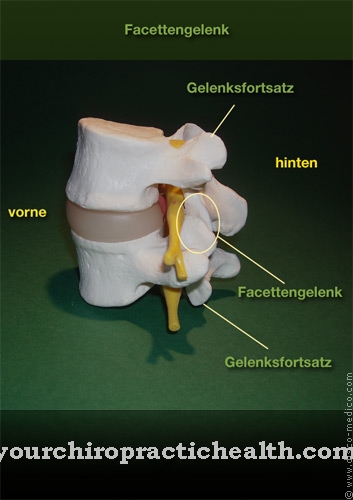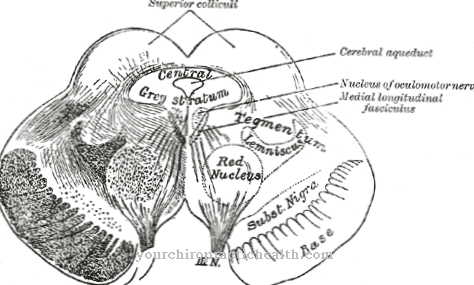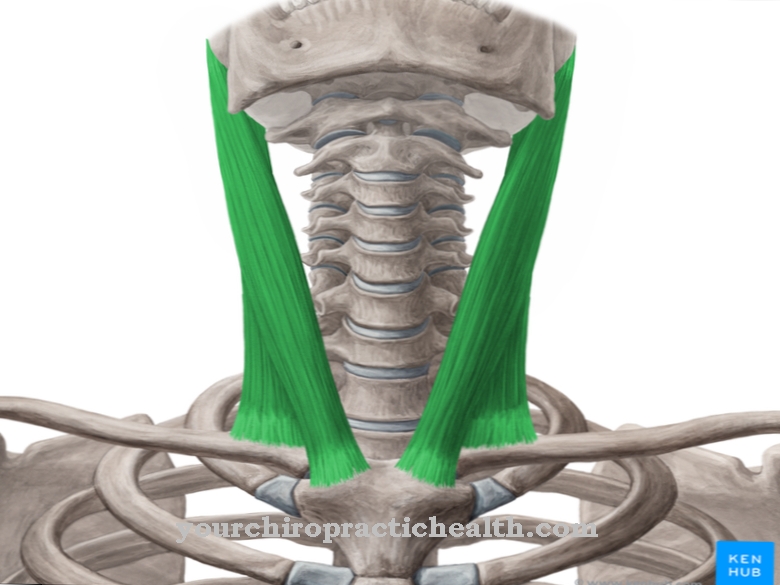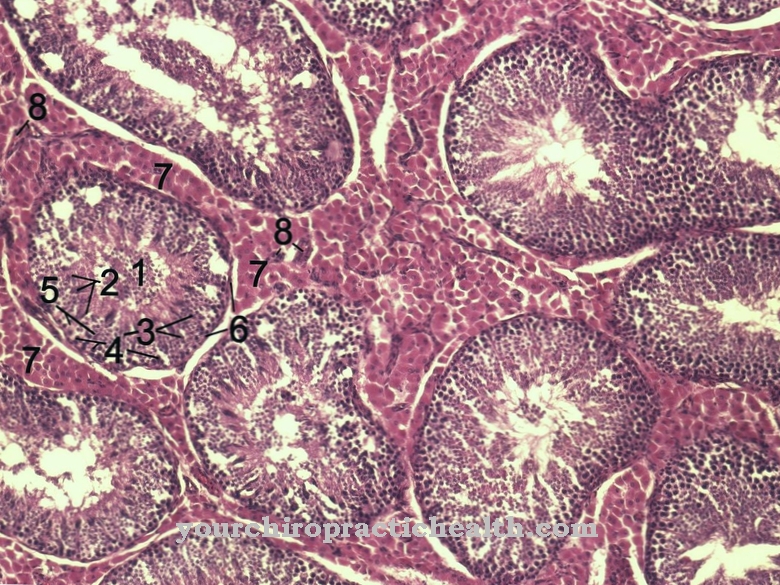Of the Olfactory bulb or Olfactory bulb processes sensory stimuli from the nose and is part of the olfactory tract. It is located at the base of the frontal lobe of the brain and has special types of neurons with the mitral, brush and granule cells. Damage and functional impairments in the olfactory bulb lead to various olfactory disorders.
What is the olfactory bulb?
The sense of smell is one of five human senses and enables olfactory perception. With their help, people recognize edible food and perceive pheromones.
In addition, smelling plays an important role in the sense of taste and in recognizing invisible dangers such as rot or smoke. The technical language also knows the olfactory bulb as the olfactory bulb. The name is derived from the Latin terms for "onion" (bulbus) and "smell" (olfacere).
Anatomy & structure
Anatomically, the olfactory bulb is divided into two structural units: the main olfactory bulb (olfactory bulb in the strict sense) and the secondary olfactory bulb (accessory olfactory bulb). The olfactory bulb lies at the base of the frontal lobe of the brain, where it forms an elongated structure that protrudes from the surrounding tissue.
It lies on the sieve plate (lamina cribrosa) of the ethmoid bone (ethmoid bone); the ethmoid bone represents part of the human skull. The bone does not form an impermeable barrier at this point, but has channels for the olfactory nerves (Nervi olfactorii). The olfactory nerves connect the olfactory bulb with the sensory cells in the nose. Contrary to a widespread misconception, the olfactory cells are not distributed over the entire inner wall of the nose, but are limited to the olfactory mucous membrane (Regio olfactoria). The fila olfactoria or olfactory threads are the axons of these cells and together form the olfactory nerve or nervus olfactorius.
Only in the olfactory bulb is there a synapse at which the nerve signal from the olfactory nerve passes to the mitral cells of the olfactory bulb. The mitral cells are in the fourth layer from the outside. Above this are the outer plexiform layer, the glomerular layer / tangled layer and the nerve layer. Further inside the olfactory bulb, below the mitral cell layer, are the inner plexiform layer and the granular cell layer.
Function & tasks
The olfactory bulb forms an intermediate point in the processing of olfactory stimuli: the information from the olfactory threads converges in it. For the function of the olfactory bulb, one of the six layers is crucial: the mitral cell layer. Their cells have a pyramid-like shape and collect signals from 1000 individual sensory cells.
The synapses between the mitral cells of the olfactory bulb and the olfactory threads are located on the spherical olfactory glomeruli, which lie in this layer. In the opposite direction, toward higher brain areas, the olfactory tract leaves the olfactory bulb. The olfactory tract consists of around 30,000 individual nerve fibers, each of which originates from a mitral cell, and forms the eye of the needle for further processing of the olfactory information. These sensory stimuli can only reach the olfactory mound (tuberculum olfactorium), the nuclei septales and the gyrus parahippocampalis via the olfactory bulb and the tractus olfactorius.
The olfactory brain is closely related to areas of the brain that process emotions; the perception of smells therefore often generates automatic emotional reactions and can trigger memories. This process can affect positive, neutral, and negative memories, but is particularly well known in the context of post-traumatic stress disorder. In this mental illness, olfactory perceptions and other triggers can cause those affected to relive severely stressful events. In this way, smells can also promote general well-being in a positive way.
You can find your medication here
➔ Medicines for colds and nasal congestionDiseases
A variety of lesions from injuries, neurodegenerative and inflammatory diseases, malformations and other pathological conditions can impair or completely prevent the function of the olfactory bulb. Medicine speaks of central dysosmia in both cases; In this type of olfactory disorder, the olfactory nerves and sensory cells may be completely intact, but processing at the cerebral level is disturbed.
Dysosmia is an umbrella term and can be divided into quantitative and qualitative disorders. The quantitative odor disorders include hyposmia, which is characterized by impaired olfactory perception, as well as anosmia, in which those affected actually or practically no longer smell (functional anosmia). Increased olfactory ability or hyperosmia can manifest during pregnancy or be caused by diseases that involve the central nervous system. Examples are psychoses - mental disorders associated with delusions, hallucinations and negative symptoms such as flattening of affect - and epilepsy.
All odor disorders are only diseases if they are pathologically pronounced. For example, people with hyperosmia do not simply have a good sense of smell, but suffer from the olfactory disorder and its consequences.
In addition to the three quantitative olfactory disorders, there are various qualitative disorders of olfactory perception. People with euosmia perceive stimuli as pleasant, the majority of which are considered unpleasant; medicine calls the opposite case cacosmia. People who suffer from odor diagnoses can perceive scents, but cannot recognize or assign them. In addition, disorders in the olfactory bulb can lead to phantosmia, i. H. to perceive odors that are not there.
The phantosmia can arise from incorrect stimulation of the olfactory bulb, in which electrical signals unintentionally arise in the neurons or reach them via incorrect connections. In contrast, the triggering smell is present in parosmia, but the subjective perception is changed. When people, under the influence of certain emotions, mistake one scent for another (but not under different conditions), doctors speak of pseudoosmia.
























.jpg)



